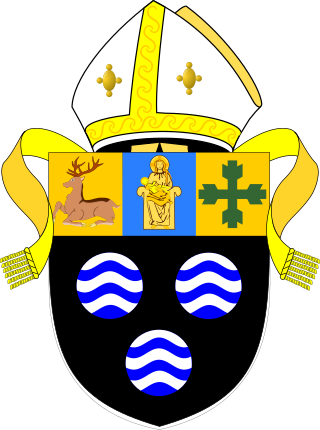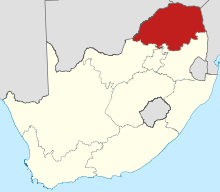
The Diocese of Nova Scotia and Prince Edward Island is a diocese of the Ecclesiastical Province of Canada of the Anglican Church of Canada. It encompasses the provinces of Nova Scotia and Prince Edward Island and has two cathedrals: All Saints' in Halifax and St. Peter's in Charlottetown. Its de facto see city is Halifax, and its roughly 24 400 Anglicans distributed in 239 congregations are served by approximately 153 clergy and 330 lay readers according to the last available data. According to the 2001 census, 120,315 Nova Scotians identified themselves as Anglicans, while 6525 Prince Edward Islanders did the same.

The Diocese of Southwell and Nottingham is a Church of England diocese in the Province of York, headed by the Bishop of Southwell and Nottingham. It covers all the English county of Nottinghamshire and a few parishes in South Yorkshire. It is bordered by the dioceses of Derby, Leicester, Lincoln and Sheffield. The cathedral, Southwell Minster, is in the town of Southwell, 15 miles north of Nottingham.
The Diocese of Toronto is an administrative division of the Anglican Church of Canada covering the central part of southern Ontario. It was founded in 1839 and is the oldest of the seven dioceses comprising the Ecclesiastical Province of Ontario. It has the most members of any Anglican diocese in Canada. It is also one of the biggest Anglican dioceses in the Americas in terms of numbers of parishioners, clergy and parishes. As of 2018, the diocese has around 230 congregations and ministries in 183 parishes, with approximately 54,000 Anglicans identified on parish rolls.

The Diocese of Cape Town is a diocese of the Anglican Church of Southern Africa (ACSA) which presently covers central Cape Town, some of its suburbs and the island of Tristan da Cunha, though in the past it has covered a much larger territory. The Ordinary of the diocese is Archbishop of Cape Town and ex officio Primate and Metropolitan of the ACSA. His seat is St. George's Cathedral in Cape Town.

The Diocese of Natal is in the region of Natal, South Africa, the diocese has its northern boundary at the Tugela River. The episcopal leader of the diocese is the bishop of Natal.

The Diocese of Montreal is a diocese of the Ecclesiastical Province of Canada of the Anglican Church of Canada, in turn a province of the Anglican Communion. The diocese comprises the 21,400 square kilometres (8,300 sq mi) encompassing the City and Island of Montreal, the Laurentians, the South Shore opposite Montreal, and part of the Eastern Townships. The See city is Montreal, and the cathedral is Christ Church. The diocese maintains approximately 9,000 on its parish rolls in about seventy parishes.
The Diocese of Pretoria is a diocese of the Anglican Church of Southern Africa. It is divided into seven archdeaconries and has 61 parishes.
The Diocese of Huron is a diocese of the Ecclesiastical Province of Ontario of the Anglican Church of Canada. The diocese comprises just over 31,000 square kilometres in southwestern Ontario, sandwiched between Lake Huron and Lake Erie. Its See city is London, and its parish rolls of 50,000 are served by 177 congregations.
The Diocese of Kimberley and Kuruman is a diocese in the Anglican Church of Southern Africa, and encompasses the area around Kimberley and Kuruman and overlaps the Northern Cape Province and North West Province of South Africa. It is presided over by the Bishop of Kimberley and Kuruman, until recently Ossie Swartz. On 19 September 2021 the Electoral College of Bishops elected to translate the Right Revd Brian Marajh of George to become the 13th Bishop of Kimberley & Kuruman. The seat of the Bishop of Kimberley and Kuruman is at St Cyprian's Cathedral, Kimberley. There had been so far 12 bishops of the See, though one of these served for two different periods of time.

The Diocese of the Free State is a diocese in the Anglican Church of Southern Africa. It was formerly known as the 'Diocese of Bloemfontein'.
The Diocese of Christ the King is a diocese of the Anglican Church of Southern Africa in the southern part of Gauteng province, South Africa.
The Anglican Diocese of Mpumalanga is a diocese in the Anglican Church of Southern Africa. The Diocese of Mpumalanga, as the name suggests, spans the northern section of the South African province of Mpumalanga, while the Diocese of the Highveld covers the southern section. The diocese comprises four archdeaconries and 22 parishes.
Christ Church is a parish in the Anglican Diocese of St Mark the Evangelist, which falls under the Anglican Church of Southern Africa. It is the only Anglican church in Polokwane. The church has a long and diverse history going back over a hundred years.
John Harry Gerald Ruston OGS was the 13th Bishop of St Helena from 1991 to 1999. He was previously Bishop Suffragan of Pretoria.

The Anglican Diocese of Leeds is a diocese of the Church of England, in the Province of York. It is the largest diocese in England by area, comprising much of western Yorkshire: almost the whole of West Yorkshire, the western part of North Yorkshire, the town of Barnsley in South Yorkshire, and most of the parts of County Durham, Cumbria and Lancashire which lie within the historic boundaries of Yorkshire. It includes the cities of Leeds, Bradford, Wakefield and Ripon. It was created on 20 April 2014 following a review of the dioceses in Yorkshire and the dissolution of the dioceses of Bradford, Ripon and Leeds, and Wakefield.
Jane Furse is a town in the Sekhukhune District Municipality of the Limpopo province in South Africa, surrounded by the villages of Ga-Moretsele, Madibong, Marulaneng, Mamone, Mokwete and Riverside.
Mark Nye (1909–1993) was an Anglican bishop and political prisoner in South Africa during the apartheid era.

The Anglican Diocese of Asante Mampong was inaugurated on 23 November 2014, having previously been within the Diocese of Kumasi. The first Diocesan Bishop of Asante Mampong is Cyril Kobina Ben-Smith, formerly suffragan bishop under the authority of the Bishop of Kumasi. The new Diocese covers a remote rural and forest area of the Ashanti region and supports practical ministry in education, health and the provision of clean water as a part of its Christian mission.
St. Mark's College is a high school in the town of Jane Furse in Limpopo Province, South Africa. The school was founded by the brothers of the Community of the Resurrection in the first half of the twentieth century, it is no longer an Anglican church school, but rather a public school on private property. The school's governing council is chaired by the bishop of the Diocese of St Mark the Evangelist.
The Anglican dioceses of Mombasa are the Anglican presence in and around Mombasa and south-east Kenya; they are part of the Anglican Church of Kenya. The remaining dioceses of the Church are in the areas of Maseno, of Mount Kenya, and of Nakuru.








